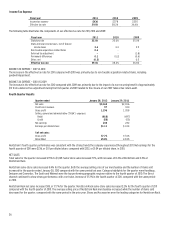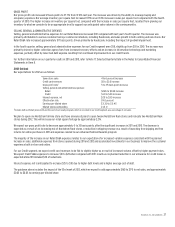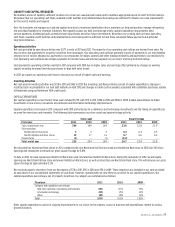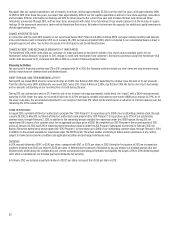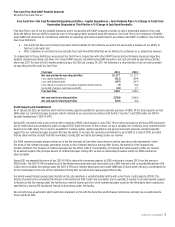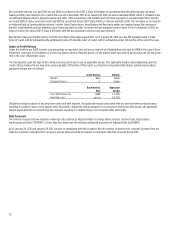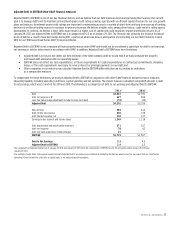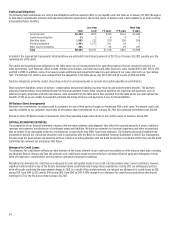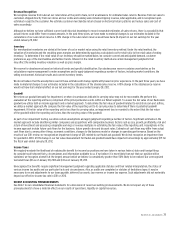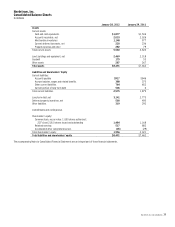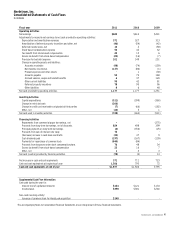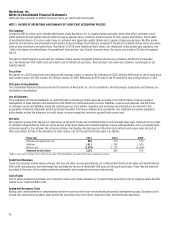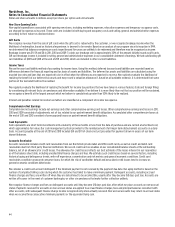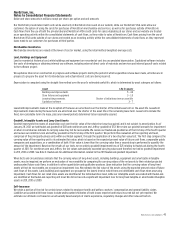Nordstrom 2011 Annual Report Download - page 36
Download and view the complete annual report
Please find page 36 of the 2011 Nordstrom annual report below. You can navigate through the pages in the report by either clicking on the pages listed below, or by using the keyword search tool below to find specific information within the annual report.36
Item 7A. Quantitative and Qualitative Disclosures About Market Risk.
Dollars in millions
INTEREST RATE RISK
We are exposed to interest rate risk primarily from changes in short-term interest rates. As of January 28, 2012, we had cash and cash equivalents
of $1,877, which generate interest income at variable rates, and gross credit card receivables of $2,074, which generate finance charge income at a
combination of fixed and variable rates. Additionally, we have long-term debt of $3,647, including $500 that bears interest at floating LIBOR-based rates
and is scheduled to mature in April 2012. Interest rate fluctuations can affect our interest income, credit card revenues and interest expense. See Note 3:
Accounts Receivable and Note 8: Debt and Credit Facilities in Item 8 for additional information.
We use sensitivity analyses to measure and assess our interest rate risk exposure. For purposes of presenting the potential earnings effect
of a reasonably possible hypothetical change in interest rates from our reporting date, we utilized two sensitivity scenarios: (i) linear growth of
approximately 140 basis points over the year, and (ii) linear decline of approximately 20 basis points over the year, due to the fact that current interest
rates are at or near historically low levels. Other key parameters and assumptions in our sensitivity analyses include the average cash and cash
equivalents balance, average credit card receivables balance and no new floating rate debt issuance. The first hypothetical scenario would result in an
approximate $10 increase in future earnings, while the second hypothetical scenario would not have a material effect on future earnings.
We occasionally enter into interest rate swaps typically to convert fixed-rate debt to variable-rate debt. We did not have interest rate swaps on our debt
as of January 28, 2012, although we continue to amortize, as a reduction of interest expense, the remaining adjustment to long-term debt originating
from gains realized on previously designated fair value hedges. For our long-term fixed-rate debt, our exposure to interest rate changes is limited to
the change in fair value of the debt. As of January 28, 2012, the fair value of our fixed-rate debt was $3,652.
FOREIGN CURRENCY EXCHANGE RISK
The majority of our revenues, expenses and capital expenditures are transacted in U.S. dollars. However, we periodically enter into merchandise
purchase orders denominated primarily in Euros. From time to time we may use forward contracts to hedge against fluctuations in foreign currency
prices. As of January 28, 2012, we had no outstanding forward contracts.


